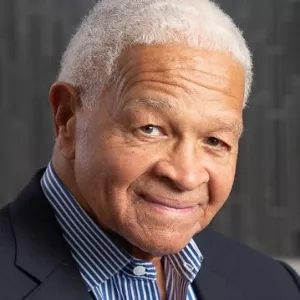Our Approach to Inclusive Supply Chains
BCG partners with companies, nonprofits, and civic organizations to build inclusive sourcing strategies. BCG can develop a comprehensive strategy to cover each component of the program in detail:
- Vision. Building the vision and ambition for the inclusive supply chain, benchmarked against leading peers.
- Roadmap. Determining near-, mid-, and long-term milestones for achieving that vision, along with detailed execution plans for implementation and key initiatives.
- Governance. Providing clear decision-making rights, roles, and responsibilities between the business stakeholders and procurement; developing processes for the team to operate efficiently, such as annual planning.
- Engagement Models. Creating service models with varying levels of support that will align the procurement team’s resources to maximize impact; the team can use these models to prioritize their capacity and standardize their playbook offerings.
- Playbook Offerings. Determining the set of levers the team can use to grow their organization’s spending with small and medium enterprises – or address key concerns like with human rights. Plus provide the set of activities the team will offer and detailed tactical instructions to execute against.
- Supplier Experience. Ensuring suppliers are supported and key principles are reinforced throughout their life cycle (effective onboarding, minimizing barriers, managing performance, helping them grow within the organization). Also developing ways to cultivate the next generation of ethical suppliers through trainings, mentorship programs, and incubators.
- Tracking and Reporting. Building advanced metrics and reporting dashboards that will go beyond spending to measure impact against key areas: traction of the program, growth of spending and of supplier capabilities, and community impact.
Our Client Work in Inclusive Supply Chain
Global Tech Company. BCG partnered with a global tech company to develop an industry-leading inclusive supply chain strategy. BCG helped the company develop a program to increase spending on underserved suppliers by a factor of five while removing systemic barriers and activating the organization. This contributed to their business as it aimed to increase supply chain resilience and reduce risk.
Video
Impact in 60: A Holistic Approach to Supplier Diversity
BCG's Impact in 60 series features our experts sharing in 60 seconds how they’re working with clients and partners to tackle global challenges and make a positive impact. Here, Frank Palmer explains how a diversified supply chain increases resilience and broadens the customer base.
Our Insights on Inclusive Supply Chain
Video
January 23, 2023
Inclusive Supply Chains
There is broad economic opportunity from investing in underserved businesses, including small and medium enterprises.
Video
August 27, 2021
Committing to Supplier Diversity
Developing supplier diversity requires leadership from CEOs, board members, and chief procurement officers. BCG’s Jim Lowry discusses what it takes to build inclusive supply chains.

Lorenna Buck has worked throughout her career to scale and grow minority-owned businesses by combining her passion for racial equity with her experience in the private equity space.

The tech giant is leveraging an innovative solution, a growth-focused alliance, to increase its purchases from diverse suppliers.

Article
June 27, 2024
New regulations will require business to play a larger role in protecting human rights. Here’s how companies can create the necessary transparency throughout their supply chains.

Article
May 17, 2023
To support their company’s strategic decisions, procurement leaders should monitor a wide variety of trends that affect supply availability and costs.
Meet Our Inclusive Supply Chain Consulting Team
Our consulting team knows how to create impact beyond dollars spent. They are experienced at discovering underserved suppliers, creating partnerships and mentorships, and scaling impact. Here are some of our experts on the topic.












